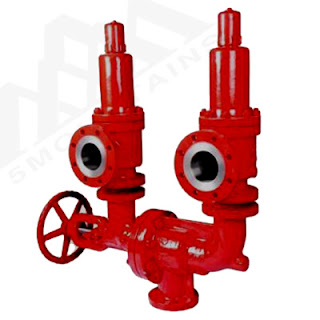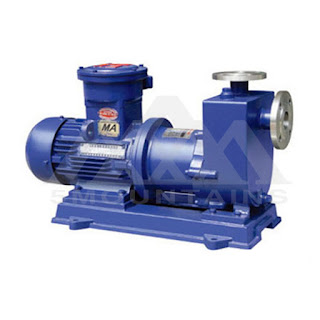Things you should know about Safety valves
Safety valves are protective devices for boilers. The pressure vessels and pressure pipelines prevent pressure in the pressurized equipment from exceeding the design.
Since the safety valve can operate independently of any external energy source, it is the last protective device for pressure equipment. In this sense, according to the safety valve manufacturer, no other protective devices replace it.
When you find an abnormal increase in the pressure of the medium for some reason & reach the pre-set value, the safety valve automatically opens and then discharges to prevent the pressure from continuing to rise. Then the reduction in the medium pressure due to the discharge of the safety valve or reach of another predetermined value, the valve automatically closes, preventing the medium from continuing to discharge. The valve remains closed and sealed when the medium is at normal operating pressure.
It automatically opens and closes according to the working pressure of the pressure system. When the pressure in the equipment or pipeline exceeds the pressure set by the safety valve, the pressure relief is opened automatically to ensure that the medium pressure in the pipeline is under the set pressure, protecting the operation of the equipment and pipeline, preventing accidents, and reducing losses.
Types of safety valves
There are two types of pressure safety valve structures; spring type & lever type.
The spring type refers to the sealing of the valve disc & the valve base by the force of the spring. The lever type is the force of the lever and the hammer. The spring wire safety valve is divided into a micro-opening safety valve & a full-opening safety valve. The height of the micro-opening safety valve is 1/15-1/20 of the inner diameter of the valve seat, and the full-opening safety valve is 1/3-1/4.
According to the Pressure Reducing Valve Manufacturer method, you can adjust the pressure. It can be divided into fixed or non-adjustable safety valves and adjustable safety valves;
A fixed non-adjustable safety valve has been set at the factory. It cannot be changed when in use. It is commonly part of central air conditioning, boiler wall hanging furnaces, and solar light systems, such as the 0485 series safety valve.
Adjustable safety valve jump pressure can be set arbitrarily in a certain range according to the different needs of users common language system protection pressure needs to change frequently on occasions such as 1831 series safety valves.
The selection principle of the safety valve:
Steam boiler safety valve, generally choose open full-open spring safety valve 0490 series.
The safety valve for liquid medium selects micro-opening spring safety valve 0485 series.
Safety valves for air or other gaseous media are in use as close full-open spring safety valves.
Safety valves for liquefied petroleum gas vehicles are in use for full-opening built-in safety valves.
Read Also - Order safety valve from the top Safety valve Supplier
Purpose & function
The safety valve helps with protecting life, property, and the environment. It also helps with opening and releasing excess pressure from the vessel or device and closing it again after returning to a normal state & prevents further release of fluid.
Even if any other critical component in the pressure system fails, the safety valve can still be a reliable guarantee for the protection of the plant and equipment. Therefore, it must ensure that the safety valve can operate at any time & under any circumstances. Safety valves are not process valves or pressure regulators and should not be misused. It should operate for only one purpose: overpressure protection.
Reasons for excessive pressure in the vessel
There are many reasons why the pressure in the vessel or system may exceed a predetermined limit value. Section 4 of the API standard provides detailed guidance on the causes of overpressure, the most common of which are:
Blocking conditions
Suffering from an external fire is often referred to as a "fire condition".
Thermal expansion
chemical reaction
The heat exchanger tube ruptures
Cooling system failure
According to safety valve manufacturers in China, each of these events can occur individually or at the same time. Each overpressure cause also produces fluid losses, such as smaller media losses during the thermal expansion & the larger media losses during chemical reactions. It is the user's responsibility to take into account the amount of pressure relief in extreme cases & to select the appropriate pressure relief device.



.jpg)


Comments
Post a Comment